The inside story of The Last of Us, direct from Naughty Dog
What’s the legacy of The Last Of Us? A year after its release on PS3 and with Remastered now out on PS4, it’s a question that’s appearing more and more in discussions about the game. To people like you and I, it’s one of the best games ever made. But let’s come back to that and instead return to 2009. After Uncharted 2: Among Thieves shipped and got all the success it deserved, it was time for something new at Naughty Dog. Game director Bruce Straley and lead game designer Neil Druckmann would split off to start a second team. Straley would still be game director, while Druckmann would become creative director. Even then, this wouldn’t be the first time the studio would attempt a two-team effort.
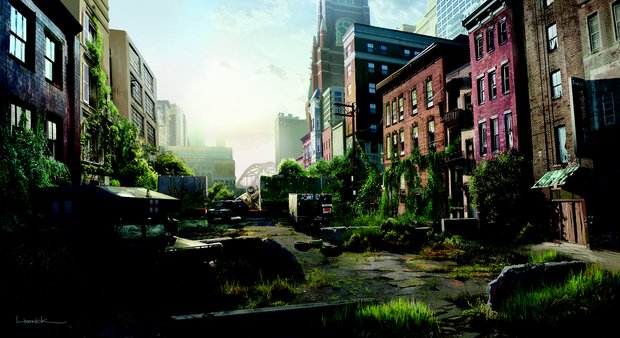
“We tried going to two teams before and we weren’t ready for it; it didn’t really work out,” Druckmann reveals, referencing how Naughty Dog attempted a dual-team setup to work on Jak And Daxter for PSP around the time development on Uncharted: Drake’s Fortune was ongoing. The plan unfortunately fell through due to resources – ND underestimating the demands that UC1’s development needed.
But Naughty Dog had grown substantially by the time Uncharted 1 and 2 had shipped, to the point where the confidence to put together a second team re-emerged. So it was Druckmann, Straley and team two who would begin work on what would become TLOU. But not before attempts were made to bring Jak And Daxter to PS3 first. “We felt like we had something really special [Uncharted 2] in our hands, but even before that game came out, our bosses [Naughty Dog co-presidents Evan Wells and Christophe Balestra] started thinking of like, ‘Well, we’ve grown over Uncharted 1 and 2, maybe it’s time to try the two-team thing again’. And you’ve no idea how difficult it is to create a new IP, it’s like you’re starting from scratch. You have no idea what’s going to work insofar as story or characters or gameplay – ‘Do you go first-person or do you choose to go third-person?’. So to make our lives easier and to say, ‘Okay, we’re gonna branch off and start this whole team, let’s start with an established IP, let’s not give ourselves too many challenges at once’. And we were given the task of rebooting Jak And Daxter.”
Concept artists had, “free reign,” to, “rethink the look,” of the series while Straley and Druckmann tried thinking up new ideas. But as work continued, doubts grew over whether Jak And Daxter was being made for the right reasons or purely just for marketing ones. In the end, after meeting with Naughty Dog co-president Evan Wells, work was scrapped on the new Jak And Daxter and efforts were now refocused on an entirely new IP.

“That was kind of like this double-edged sword. In one sense, it was freeing to say, ‘We’re not attached to anything we’ve done before, we can really reinvent what we do’,” says Druckmann. “On the other hand, it was like, ‘Oh my God, the sky’s the limit, how do we narrow this down, how do you start finding those constraints so you can build towards something?’And those were several months that were exciting in some ways, but also difficult in that we would brainstorm fantastical settings. We would brainstorm first-person shooter mechanics, we would brainstorm a Left 4 Dead-style multiplayer game that had very little story. And we kinda branched off to explore all these aspects.”
In coming up with a new IP, the team asked several questions: “What is a Naughty Dog game? What do people expect when they buy a Naughty Dog game? If we didn’t already work at Naughty Dog, what would we want from the studio?” Then the answer clicked (no pun intended) in the form of how strong its characters were, as well as lessons learned based off its experience with making Uncharted.
“We have a lot of amazing animators, concept artists and a pipeline that’s built around these very narrative focused experiences and we’ve really been honing our craft with the Uncharted series. It was like, ‘Okay, what if it’s the evolution of that, maybe that’s where we should focus our energy?’ And it’s around this time we came up with this concept, ‘Okay that’s kind of our strength, so what if we made a narrative that was all about characters? Let’s go as simple and intimate as possible, it’s just about these two individuals and we’ll do everything in our power – whether it’s music, story or gameplay – so that everything will be constructed around the bond that these two people form’. And over time, this duo became Joel and Ellie.”
Weekly digests, tales from the communities you love, and more

Despite rising levels of storytelling maturity and craft over the years, Naughty Dog’s games have always maintained a feeling of keeping it ‘light and loose’. But with TLOU, it needed to have the story rooted firmly within reality. This needed to be a game that was brutal, borderline depressing, even, to play. Yet any notions that keeping it realistic makes writing the story easier are quickly dispelled by Druckmann. “Going grounded is very, very, very difficult. I think sometimes people think the opposite, which is ‘Oh, it’s real life, it’s easier…’” He continues: “With Uncharted, we felt pretty constrained coming off Jak And Daxter, because Jak And Daxter was like, ‘In this mission, Daxter is going to ride a missile, and in this mission you have to fly through a bunch of rings, and in this mission it’s going to be a top down shooter’. With Uncharted, it felt pretty grounded, but we still had the big spectacle; the set-pieces that we kind of figured out with Uncharted 2 that let us switch things up. With TLOU, it felt like the story we wanted to tell needed to be more grounded. It needed to go a little darker to explore a sadder theme than what we’ve done in the past. But that was such an undertaking.”
There are scenes in TLOU that tell a believable and brutal story with emotional velocity that hits you for six. There’s Tess’ death; Henry’s & Sam’s fates; the ranch showdown between Joel and Ellie; that scene with Ellie continuously hacking David… And of course, what happens at the hospital and that incredible ending with Joel’s lie and Ellie’s look… You know the one. But if there’s one thing The Last Of Us does well, it’s that it connects you to its world and its characters in such a quick time frame. One such scene that proves this point is perhaps the cruellest moment in the entire game – Sarah’s death and the build up to it as the outbreak begins. If you’ve watched Grounded, the making of documentary, you know how emotionally spent Troy Baker and Hana Hayes – the actress who plays Sarah – were making those scenes, and the places they went to in order to get the best possible take. Part of that section’s success comes down to playing as Sarah.
“You were gonna play as Joel and you were going to hear this scream at a neighbour’s house,” says Druckmann. “And you were going to see the wife’s dead and the husband attacks you and you have to kill him. You run back to go get Sarah, so everything was seen from Joel’s perspective. And maybe that would have been fine. But during one of our brainstorms with one of the designers who was working on that level, we’d been talking about how it it all feels pretty pedestrian: ‘I can tell what’s going to happen before it happens’. And then it’s just like, ‘What if we didn’t play as Joel? What if we saw everything through Sarah’s eyes?’
“And all of a sudden, that became a lot more intriguing. It let us build the fear of seeing the apocalypse from a kid’s perspective instead of the adult’s point of view. And as a kid, you’re kind of being lied to and you’re trying to be protected. And I think through interactivity it lets you connect with Sarah really quickly. I think in a movie it would be very challenging to connect with her on such a level. But somehow, seeing you with the stick moving her, I think, is the magical thing about games. I believe as you start thinking as Sarah, you start seeing the situation as Sarah.”

Druckmann notes the point of that scene was to make the player, “feel Joel’s pain,” after building up Sarah as this likeable character, only to see her die so tragically. “You still have the imagery of that loving father and that helped us create empathy with this guy that’s really not a good guy for a while. And then Ellie comes into the picture and he’s rejecting Ellie. We actually had to make some changes there so Tess gets him to push on. And that really bought us time to say, ‘Okay, Joel’s going to take hours to start connecting with Ellie and therefore, we have all this time to get the player to connect with Ellie as well’. So that was a really good structure for us to get you first to connect with Joel, and then over time, as he starts to care more and more for Ellie, the player is doing something similar through the gameplay.”
In building TLOU’s post-pandemic world, Naughty Dog needed to create a set of enemies born out of the Cordiceps fungus. Cue the Infected and the Clickers. Influenced by that now well-known Planet Earth video used in the marketing for the game – in which it showed ants being infected with the fungus – it served as the inspiration for the idea of an outbreak in humans.
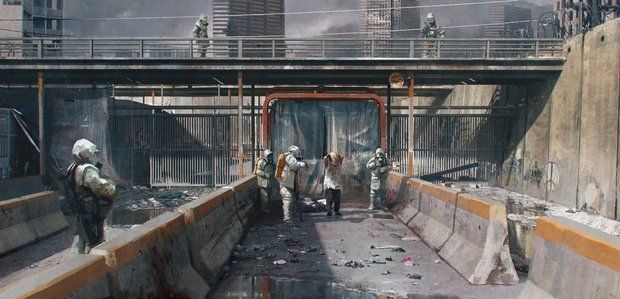
Druckmann confirms, when I ask about the possibility of other inspirations regarding the Infected, the Cordiceps fungus from the Planet Earth video was the only one they went with. And for good reason, too. “I remember when we saw the Planet Earth video while we were still working on Uncharted 2, we were all blown away by it and we were like, ‘Oh my God, zombie ants!’ And we were actually joking, ‘Why is nobody using this – this is a perfect grounding of the zombie lore!’ And we would joke, ‘Wouldn’t it be cool if we made a game out of it?’ As soon as we had that opportunity and we were talking about these characters, right away, we jumped right back into the concept of the Cordiceps and the idea of the beautiful overgrown world. And those were our three elements that propelled the project forward that got us thinking of the story, the arc and the journey.”
It’s not just the Infected that show signs of the apocalypse, though; it’s the world built within the game. Look at the areas as palatial and beautiful as the start of Lincoln, Salt Lake City and its gorgeous surroundings, then compare them with the depressing scenery of Boston and Pittsburgh. The game’s beauty spots aren’t there to just paint a picture. “I think that’s something [the lushness of the environments] we honed on really early, which is if we, as people, were gone, the air would get cleaner, the water would get cleaner, nature would reclaim its domain and nature can be quite beautiful.

“That’s the idea of this really strong contrast between beauty and death. It’s something that drew us to this project and drew us to this concept and felt like we could do something different, in the gaming space at least, as far as how you show a post-pandemic environment and really find the beauty of it – really find this city street that’s flooded that has all these trees growing from it. It’s really beautiful and it’s inviting you to go and start exploring it. And at the same time, it’s kind of eerie because those trees, that vegetation, as beautiful as they are, represent death.”
TLOU is mainly about Joel and Ellie, but if you distil it down, it’s actually really all about Ellie. The journey of accompanying a 14 year-old girl was the game’s premise from the beginning of its conception and through many iterations of the story (last year Druckmann gave a public speech dissecting that relationship through the game’s many changes). But it’s also her personality that really stands out; her innocence shines in this bleak and cold world and, as the game progresses, Ellie develops a sense of independence not present in many other characters. At least not in the same way as TLOU did it.
"The photobooth, that must have gone through a dozen iterations and was as hard to create as the collapsing building in Uncharted 2."
“I remember the thing that has always drawn me to the story, which never changed during the different iterations, is these two characters. He’s the more capable one, she’s the more innocent one,” explains Druckmann. “And then over the course of the game, they swap roles. And she becomes more independent and capable, he becomes more attached and helpless so that when you reach this climactic moment [at the end of the Autumn], he’s going to become incapacitated and she’s going to transform into the hero, both in story and gameplay.”
Of course, Ellie becoming the protagonist at the beginning of Winter is the game’s biggest surprise. In the Grounded video, Druckmann apologises to journalists for lying about Ellie not being playable. (We forgive you – Ed.) But in his defence, it’s a wonderful surprise because the Ellie we control is not the same Ellie we meet in the streets of Boston, and over the course of many hours we’ve seen her evolve into a survivor. “We always knew if we kept that idea hidden, when you reach that moment and you take control of Ellie, it will be magical. It’ll be what makes [the] game great. So that was the backbone of where she started.”
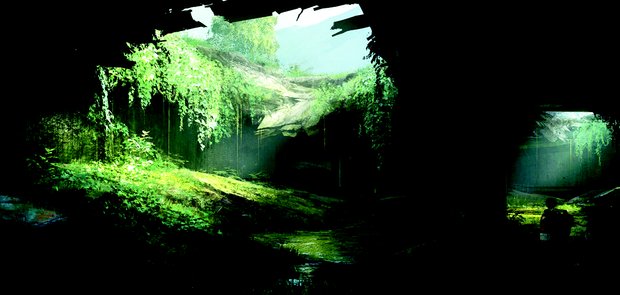
But if Ellie’s character development is just one half of why she was an incredible character, the other half comes down to how she looks and how she sounds. And in terms of the latter, that was all down to the input of one person: actor Ashley Johnson. “Our concept artist did so many iterations as far as what she would wear and how we’d capture this tomboyish personality, as well as her wardrobe and overall aesthetic. And then with Ashley Johnson, there was some humour in the script, but Ashley just took it to this whole other level in terms of her timing and it always felt very organic and real – it never, ever felt quippy. That was an important thing for me when writing it – it was like, ‘Nothing should feel quippy. If there’s ever humour, it should feel like it just comes out naturally from the situation’.”
Ellie’s heart-on-her-sleeve, no-nonsense attitude was all down to part of Johnson’s actual personality. “It’s funny. If you know Ashley, she’s this super-quirky, funny person, but she’s also a kind of a badass. People can piss her off and she can have this short fuse – not on the set, necessarily, but with rude people in life. And she brought those qualities to Ellie. “And because we write as we go as part of our process, so much of how Ellie speaks, how she behaves, how she stands up for herself… a lot of it was influenced by Ashley.” He continues: “Once we had W Earl Brown as Bill and you saw him and Ashley in a scene together, and the way they antagonised one another in this funny way, again, that helped define Ellie. That was kind of the intriguing thing of going into Left Behind and saying, ‘Okay, who was this person before she met Joel and what started defining her as far as when this journey started?’”
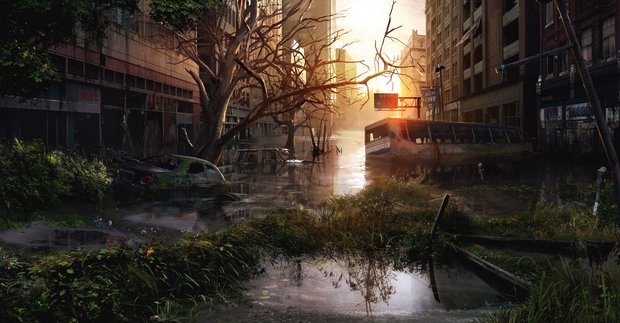
Ah, Left Behind. The first ever story DLC developed by Naughty Dog, taking place after the events of comic American Dreams but before the main game, sees Riley re-enter Ellie’s life after a long absence. If you’ve reached the ending of the main game, though, you know what its conclusion will be before you play it. Druckmann says exploring their relationship was the initial concept it latched onto, noting the development team, “really liked the idea of exploring the event that led to Ellie being infected, and exploring Ellie with her friend being infected.”
But Left Behind was also about establishing a friendship that hinted at being something more. As it begins, Ellie is distant from Riley, the character co-created by comic book writer Faith Erin Hicks from a unique creative partnership between herself and Druckmann on American Dreams. But as Left Behind goes on, it starts dropping subtle hints at the direction in which it’s headed. The hinting effectively begins at the photobooth, which you’d assume – from a development standpoint – would be easy to include. It wasn’t. “The photobooth, that must have gone through a dozen iterations and that was as hard to create as the collapsing building in Uncharted 2 as far as resources, animation, and time spent on it,” Druckmann says to my surprise. “[Because of] all these nuances: the dialogue has to be perfect, how quickly you press the buttons between the options has to work, the timing of the humour has to work as well. And it has to fit in this larger arc of the relationship between Ellie and Riley, so that when you finish the photobooth you get a hint of, ‘Well this relationship is more than a friendship’.”

The hinting keeps going afterwards with the arcade section (“Everyone hates QTEs and QTEs have this exact, horrible name now in games. Everyone wants to avoid them. We were like, ‘You know what? Let’s make the best QTE ever made in a videogame!’”) and the water gun fight before it, culminating with that sweet moment when the two characters share a kiss. In fact, after I played Left Behind the first time, I began to see this escapade between them as less of two mallrats up to hijinks, but more of a date. So I asked Druckmann: was I going crazy for thinking it was a more intimate trip? Turns out, thankfully, I wasn’t.
“No, that was definitely in mind when you work with actors who try to find the real world metaphor, such as, ‘What’s the closest thing you’ve done that relates to that moment?’ So even if you’re there, I don’t know, seeing giraffes for the first time, it’s like: ‘What experience have you had that mirrors that?’ And that was definitely [the case] between Ellie and Riley, so we started thinking of it as a date. The other metaphor was like skipping school. You have two girls skipping classes and going to the mall. Of course, the mall here is empty and filled with the ideas of death, but it’s still two kids. And that’s a thing I can relate to from childhood. Like having gone on these weird dates where we’re skipping school and she’s going to have fun and create havoc and get into trouble.”
So what’s the legacy of TLOU? To me and you, it is one of the best games of all time. But to Neil Druckmann? As he, Bruce Straley and co now return to the Uncharted series with A Thief’s End, he never really thought of seeing it that same way. But regardless, he makes clear the game that was built was first and foremost a game Naughty Dog wanted to play –albeit one that can make a wider mark on the industry. “I hope its success inspires other developers to, even if you’re making an action game, take your characters seriously and treat them honestly. Really love your cast and wrack your brain about how you – through gameplay, through interactivity – get the players to connect more to those characters no matter what game you make, whether you make an RPG, a shooter or a choose a branching adventure game. I think as an industry, we can do more to develop really great stories and really compelling, diverse characters. And I know we’re going to keep pushing ourselves in that area. There’s so much room to grow still that I hope The Last Of Us helps in that regard.”
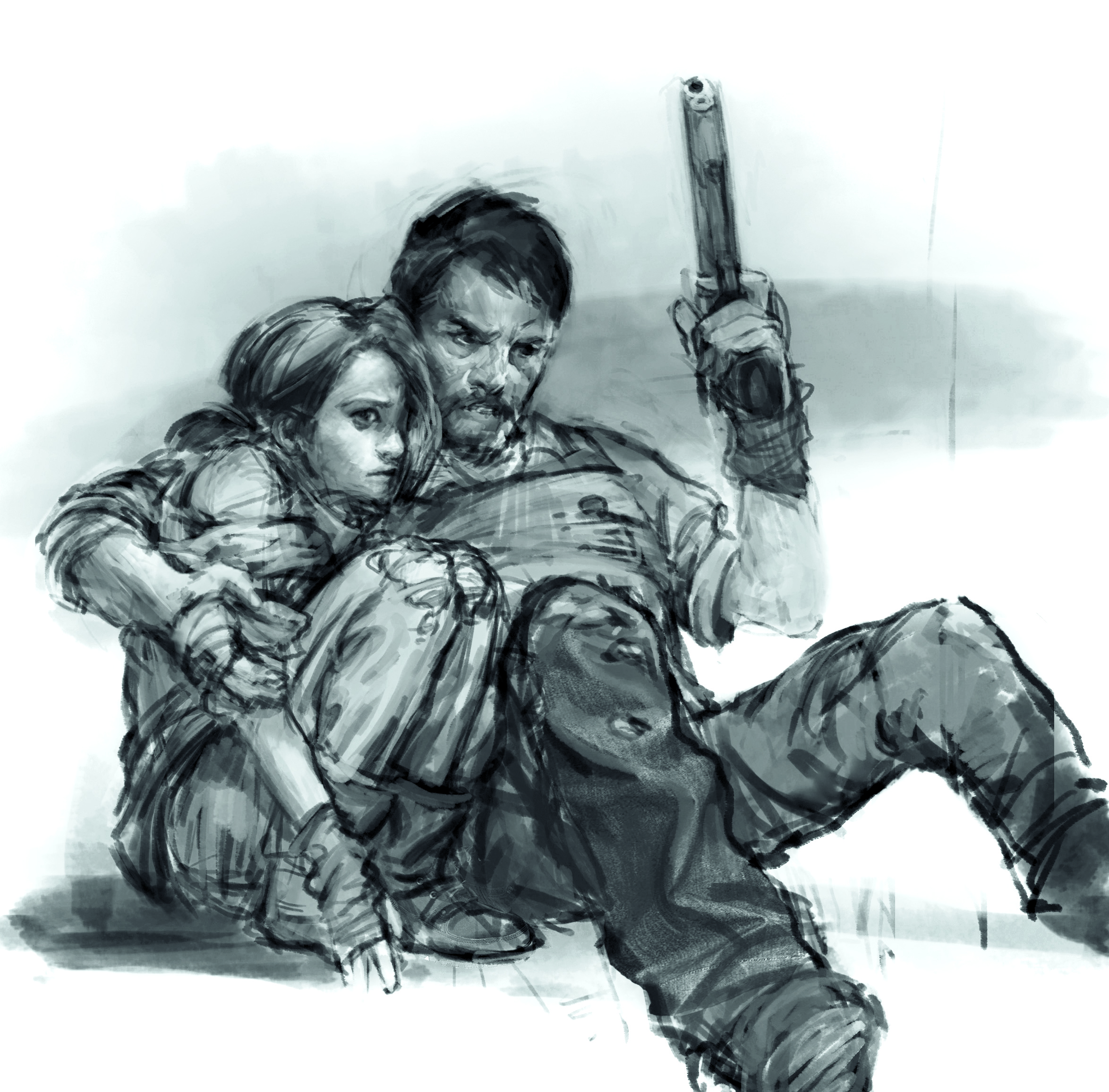
As I wrap up, I thank and congratulate Druckmann for his part in making the game that you voted #1 in your PlayStation’s 100 Greatest Games Ever poll. And as he gives appreciation for the placement and notes how much the game has connected with people, he mentions a brief story he learned from a recent conversation with Ashley Johnson that ties into what happened in Left Behind. “Ashley recently told me she went to a convention and there were a few girls who were still very much connected to Ellie – who came out to her at that very convention. And again, knowing that people have related to the material in such a personal level is, to me, the game’s greatest achievement.”
Is there a finer legacy than this? As much as many gamers adore TLOU for pure popcorn reasons, it means significantly more to those who found something much deeper and personal in Left Behind. “That’s what we’re going to keep trying – how do we make the material personal? It should still be fun, it should still be engaging and intriguing, but let’s try to say something with it as well,” Druckmann concludes. Just after the giraffe scene in Salt Lake City, despite Joel telling her she doesn’t have to go through with going to the Fireflies, Ellie tells him that after all they’d been through, “it can’t be for nothing.” You can also apply that mantra to Neil Druckmann, Bruce Straley and the entire team who worked on The Last Of Us through the various trials and pressures during its lengthy development. After everything they’d been through in making the game, it couldn’t be for nothing, right? As it turned out, it was as far from ‘nothing’ as is possible. And that, for me, is the true legacy of The Last Of Us.
Click here for more excellent Official PlayStation Magazine articles. Or maybe you want to take advantage of some great offers on magazine subscriptions? You can find them here.
We are Play magazine, the biggest-selling,100% independent, magazine for PlayStation gamers. Founded in 2021, it's brought to you by the same team of writers, editors, and designers as the Official PlayStation Magazine, with the same deep industry access, quality of writing, and passion for all things PlayStation. Follow us for all things PS5, PS4, and PlayStation VR.



